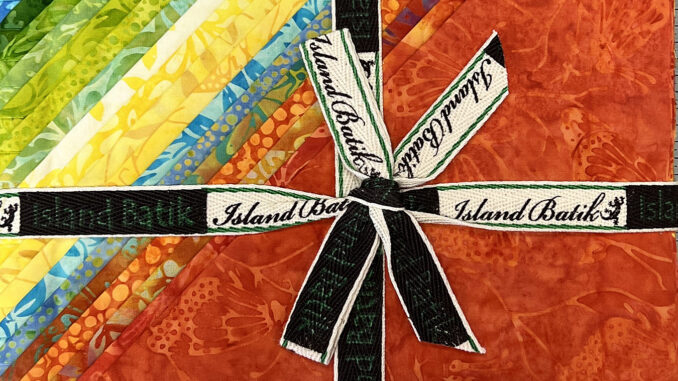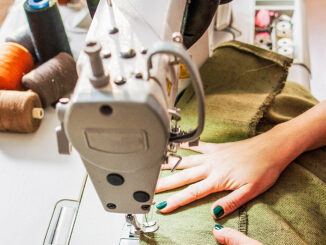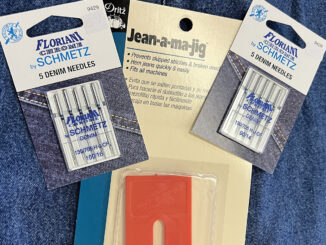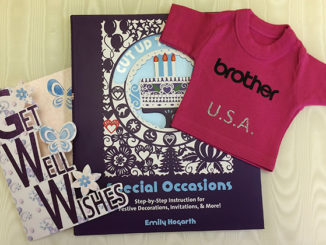
As with any sport or hobby, the crafting world has its own set of vocabulary to understand. Quilting has quite a few terms that outsiders should become familiar with, especially if you have someone who quilts. The more common terms used in quilting and their meaning are:
Backing: The back of the quilt/bottom layer. This fabric can be plain, such as muslin, or decorative.
Batting: The middle layer of the quilt between the top and the backing. This can provide warmth to the quilt and definition of quilting stitches. Batting can be made from polyester, wool, cotton, or a combination of fibers such as cotton/polyester.
Bias: Refers to the stretch when cutting through woven fabrics at a 45 degree angle. Quilting will involve some cuts on the bias.
Binding: The narrow strips of fabric that cover and finish the raw, outside edges of the quilt.
Borders: Strips of fabric that “frame” the quilt block top. These can vary in width. Also, several borders can be used in a quilt top.
Chain Piecing: Method of stitching together quilt pieces in a continuous chain of stitches; as the end of one seam is neared, the next pieces are “butted up” to the stitched piece so that you stitch the next seam without breaking the stitch. This is a time- and thread-saving technique for machine piecers.
Charm Squares: Five-inch squares that are usually bundled in groups of 40-42 from a coordinated fabric collection.
Fat Quarters: An 18”x22” cut of fabric that is equal to ¼ yd. of fabric. The cut is half of a half-yard of fabric. In area, the Fat Quarter and a ¼ cut of yardage are the same area of inches but the “fatter cut” provides more options for a quilter’s use.
Fat Quarter Bundles: Coordinating fat quarters are gathered together in a bundle that makes fabric selection easy for the quilter. Bundles can range in size from four to 40, depending on the size of the fabric collection the bundle comes from. Many quilt patterns are based on using Fat Quarter bundles.
Grain: Refers to the way the threads are woven into the fabric. Warp grain is the lengthwise threads of the fabric and the grain with the least stretch; weft grain is the threads that run selvage to selvage.
Hand: Refers to the feel and drape of a fabric (The fabric has a nice “hand”).
Layer Cakes: Ten-inch fabric squares that are usually bundled in groups of 40-42 from a coordinated fabric collection.
Sashing: Similar to borders but these are used around quilt blocks to separate them from each other. Not all quilts will use sashing.
Selvage: The woven edge of the fabric that doesn’t ravel
Strip Sets or Jellyrolls: 2-1/2”x43”/44” fabric strips that are usually bundled in groups of 40-42 from a coordinated fabric selection. Many quilt patterns use this size of strip for making blocks, so these precut strips are a time-saver for the quilter.
UFO: Un-Finished Objects. Common term used by quilters to describe the many projects that are in progress. Most quilters (and other sewers/crafters) will have many of these!
WOF: Width Of Fabric; common abbreviation in quilting instructions. In quilting, many cuts are made selvage to selvage.
There are many other terms associated with quilting but the above will go a long way in making you comfortable when talking with a quilter or visiting a quilt shop. Of course, if a term is used that you don’t understand… just ask! Quilters enjoy sharing their craft with others and you’ll probably hear more terms that will have you seeking the closest quilt book!
-submitted by The Sewing & Vacuum Center





